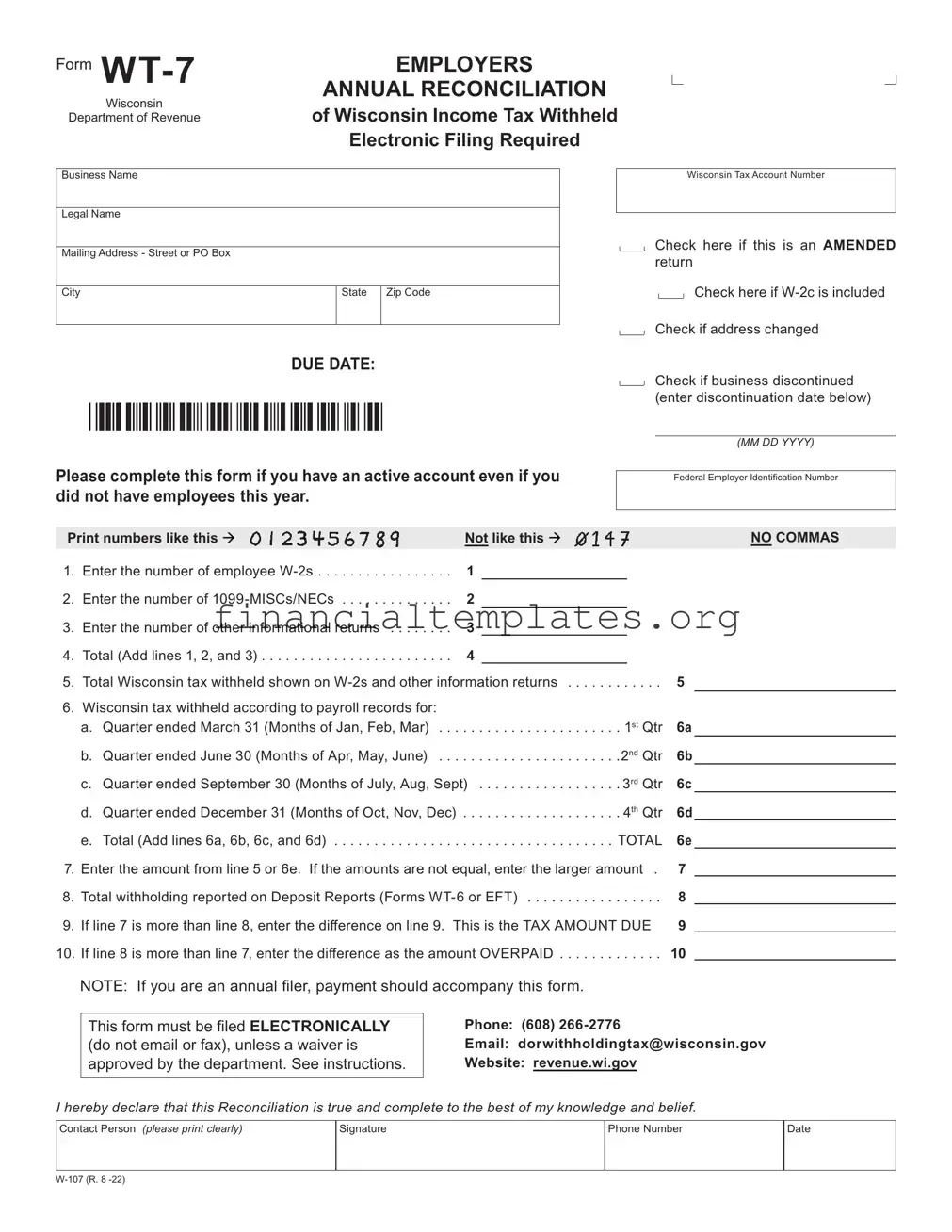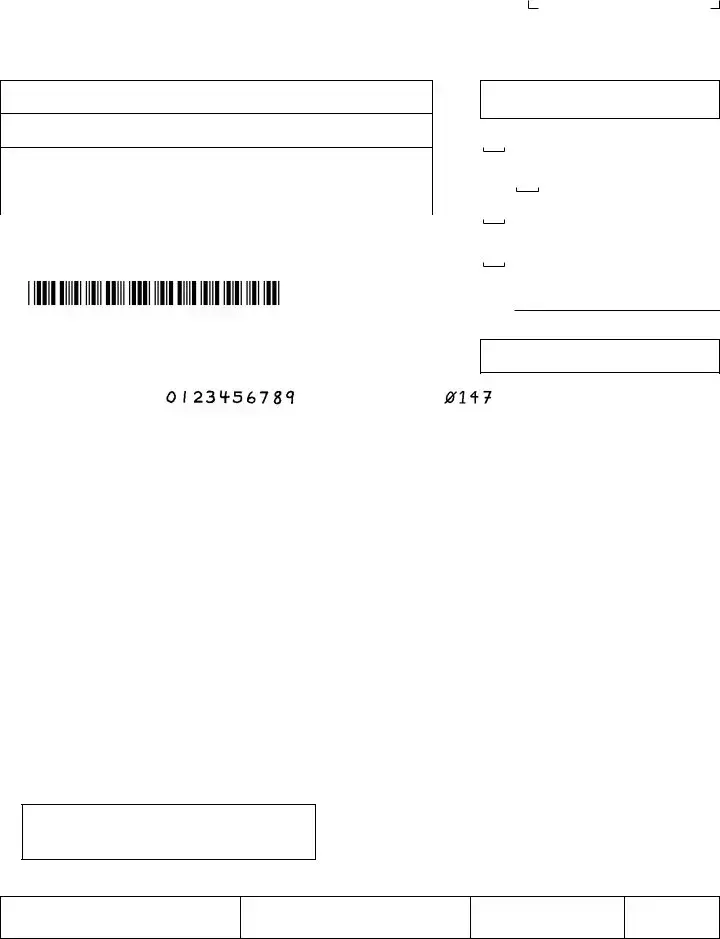The Form 940, or Employer's Annual Federal Unemployment (FUTA) Tax Return, is quite similar to the Wisconsin WT-7 Tax Form in that both are annual reconciliations related to employment. While the WT-7 deals with state income tax withheld from employees' wages in Wisconsin, Form 940 addresses the employer's federal unemployment tax liability. Both forms require employers to report total amounts related to the specific taxes they cover, reconcile the amounts due, and report any overpayment or amount due. They play crucial roles in ensuring that employers meet their respective state and federal tax obligations regarding employee compensation.
The W-3, Transmittal of Wage and Tax Statements, serves a similar purpose to the WT-7 form but operates on the federal level. The W-3 is used to transmit W-2 forms to the Social Security Administration, summarizing the total earnings, Social Security wages, Medicare wages, and withholding for all employees for the previous year. Like the WT-7, the W-3 is an annual summary report that supports the reconciling process between what was withheld and what was actually paid out to employees, albeit for different types of taxes and to different government agencies.
Form W-2, Wage and Tax Statement, is directly related to the Wisconsin WT-7 as it provides the detailed employee-specific data that underpins the summary information reported on the WT-7. Employers issue Form W-2 to report an employee's annual wages and the amount of taxes withheld from their paycheck. For the WT-7, this information is aggregated to report total amounts withheld and to reconcile these withholdings with the state. The relationship between these forms highlights the flow of information from individual employee data to summary reports for tax purposes.
Form 941, Employer's Quarterly Federal Tax Return, bears similarities to the WT-7, but it operates on a quarterly basis instead of annually. This form is used by employers to report income taxes, Social Security tax, or Medicare tax withheld from employees' paychecks. Additionally, Form 941 reports the employer's portion of Social Security or Medicare tax. The WT-7, in contrast, provides a yearly reconciliation for the state of Wisconsin. Both forms are critical for the proper reporting and payment of employment-related taxes but differ in their frequency and scope of reporting (state vs. federal).
Lastly, Form 1099-NEC, Nonemployee Compensation, is similar to the Wisconsin WT-7 in its purpose of reporting payments, but it focuses on non-employee compensation. It is used when businesses pay independent contractors $600 or more in a tax year. While the 1099-NEC is for reporting specific payments to non-employees, the WT-7 summarizes income tax withheld from employees' wages. Both are essential for accurate tax reporting and ensuring compliance with IRS and state tax laws, catering to different types of work relationships and compensation.

